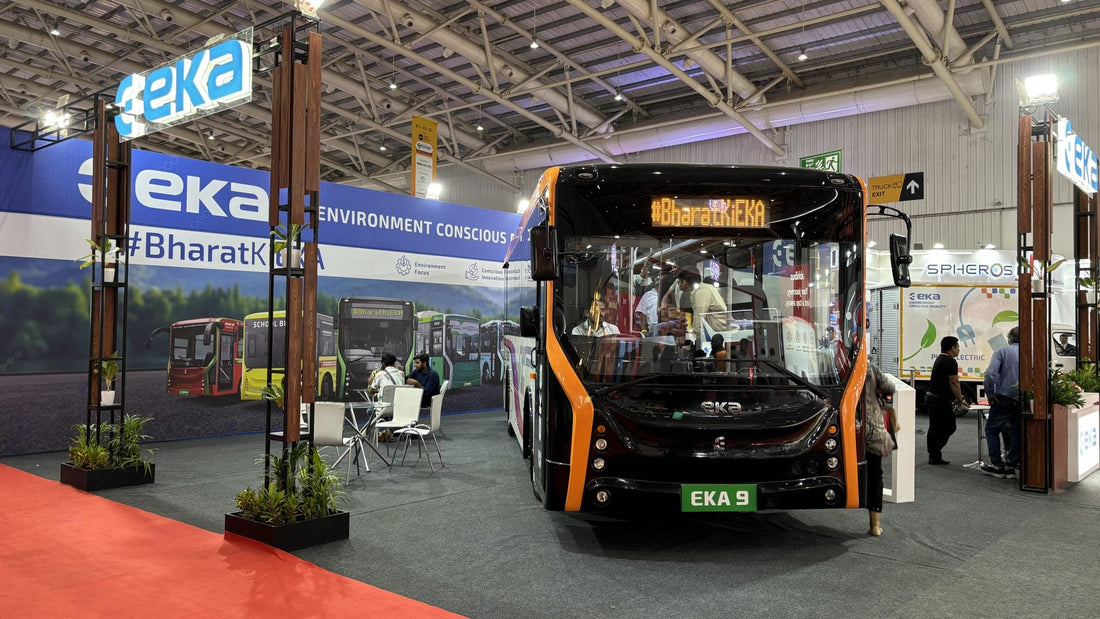
What Defines Electric Mid- and Large Buses?
Share
An Electric mid- and Large Bus Market refers to a battery electric or zero-emission vehicle designed for high-capacity passenger transport. These vehicles are typically used in city transit systems, intercity fleets, and institutional shuttle services. While dimensions may vary by market, models in the 9–14 metre range are often favoured for their blend of manoeuvrability and seating capacity.
Download Your Free Sample Here
Summary: Electric mid- and large buses offer an ideal balance of capacity and operational flexibility, enabling cities and operators to transition toward sustainable mobility.
How Are Strategic Partnerships Shaping India’s E-Bus Ecosystem?
Key Question: Which partnerships are accelerating India’s readiness for large-scale electric bus production?
According to Financial Express, in December 2023, Pune-based EKA Mobility announced a strategic partnership with Japan’s Mitsui & Co. and the Netherlands’ VDL Groep. This trilateral alliance will bring advanced European electric bus technology to India through a phased investment of approximately USD 100 million (₹850 crore). The initiative is focused on setting up robust domestic manufacturing and R&D capabilities.
Section Summary: A well-capitalized, cross-border partnership is laying the foundation for India’s indigenous electric bus production ecosystem.
- Japanese and European companies contribute financial and technical expertise.
- Facilities in Maharashtra and Madhya Pradesh are key to the local production plan.
- The alliance aligns with India’s "Make in India" and e-mobility goals.
What Technological Leadership Does VDL Groep Bring?
Key Question: Why is VDL Bus & Coach pivotal for India’s e-bus ambitions?
According to Financial Express, VDL Bus & Coach is one of Europe’s leading electric bus manufacturers, with vehicles operating across major cities in the EU. Under the partnership, VDL will transfer technology related to chassis design, propulsion systems, battery management, and quality control. This is expected to significantly enhance local manufacturing capabilities.
Section Summary: VDL’s proven platform and technical expertise are instrumental in bringing globally recognized electric bus technology to Indian roads.
Why Is Mitsui’s Investment Critical for Scaling?
Key Question: What role does Mitsui & Co. play beyond financial backing?
Mitsui has committed a significant capital investment to scale EKA Mobility’s manufacturing infrastructure. This will enable the company to not only ramp up domestic production but also leverage Mitsui’s global network to explore export opportunities to emerging markets.
Section Summary: Mitsui’s role ensures that the project is financially viable, internationally competitive, and ready for global expansion.
What Does This Mean for Fleet Operators?
Key Question: How will these developments impact bus operators and transit agencies?
Fleet operators in India may benefit from several potential advantages as this partnership matures:
- Broader fleet options: EKA recently unveiled a 9-metre hydrogen fuel-cell electric bus, adding to the diversity of zero-emission offerings.
- Improved availability: Local R&D and production facilities could shorten lead times for vehicle servicing and parts.
- Strategic alignment: Operators can better meet evolving emissions regulations and participate in India’s clean mobility mission.
Section Summary: While still early in rollout, the collaboration may pave the way for enhanced operational efficiency and sustainability for Indian fleet operators.
What Should Stakeholders Do Next?
Key Question: How can stakeholders align with the momentum created by the EKA–Mitsui–VDL partnership?
Although the Financial Express article does not provide specific guidance for fleet planners, the following actions represent logical next steps based on industry trends:
- Evaluate Total Cost of Ownership (TCO): Compare lifecycle costs of electric buses versus diesel/CNG fleets.
- Initiate Pilot Projects: Collaborate with EKA for route-specific customization and performance trials.
- Plan for Charging Infrastructure: Assess depot requirements, grid upgrades, and fast-charging solutions.
- Explore Export Potential: Coordinate with Mitsui’s network to identify demand in emerging export markets.
- Track Policy Developments: Stay updated on central/state-level EV incentives and emissions zone mandates.
Section Summary: These steps can help fleet operators, policy planners, and OEMs prepare to participate in India's fast-evolving electric bus transition.